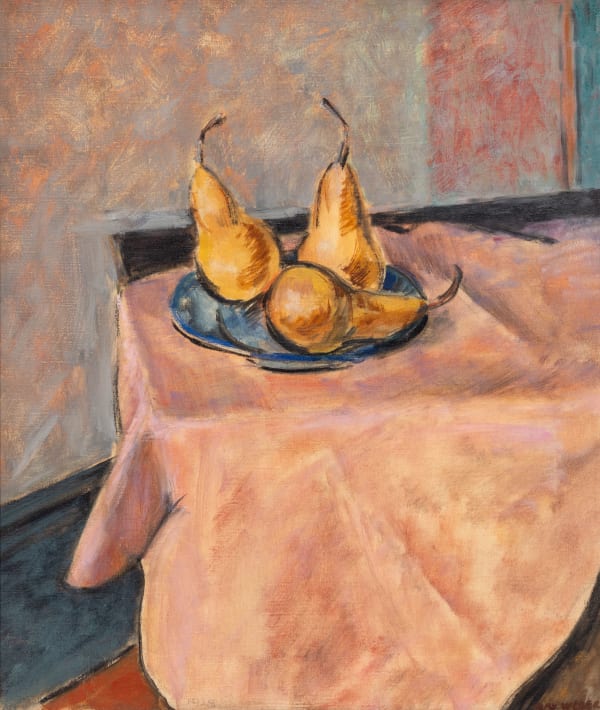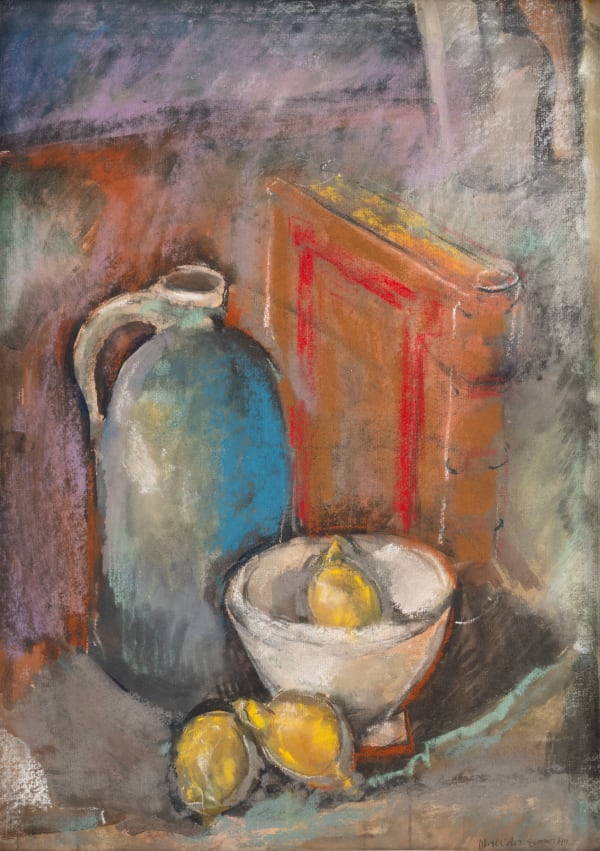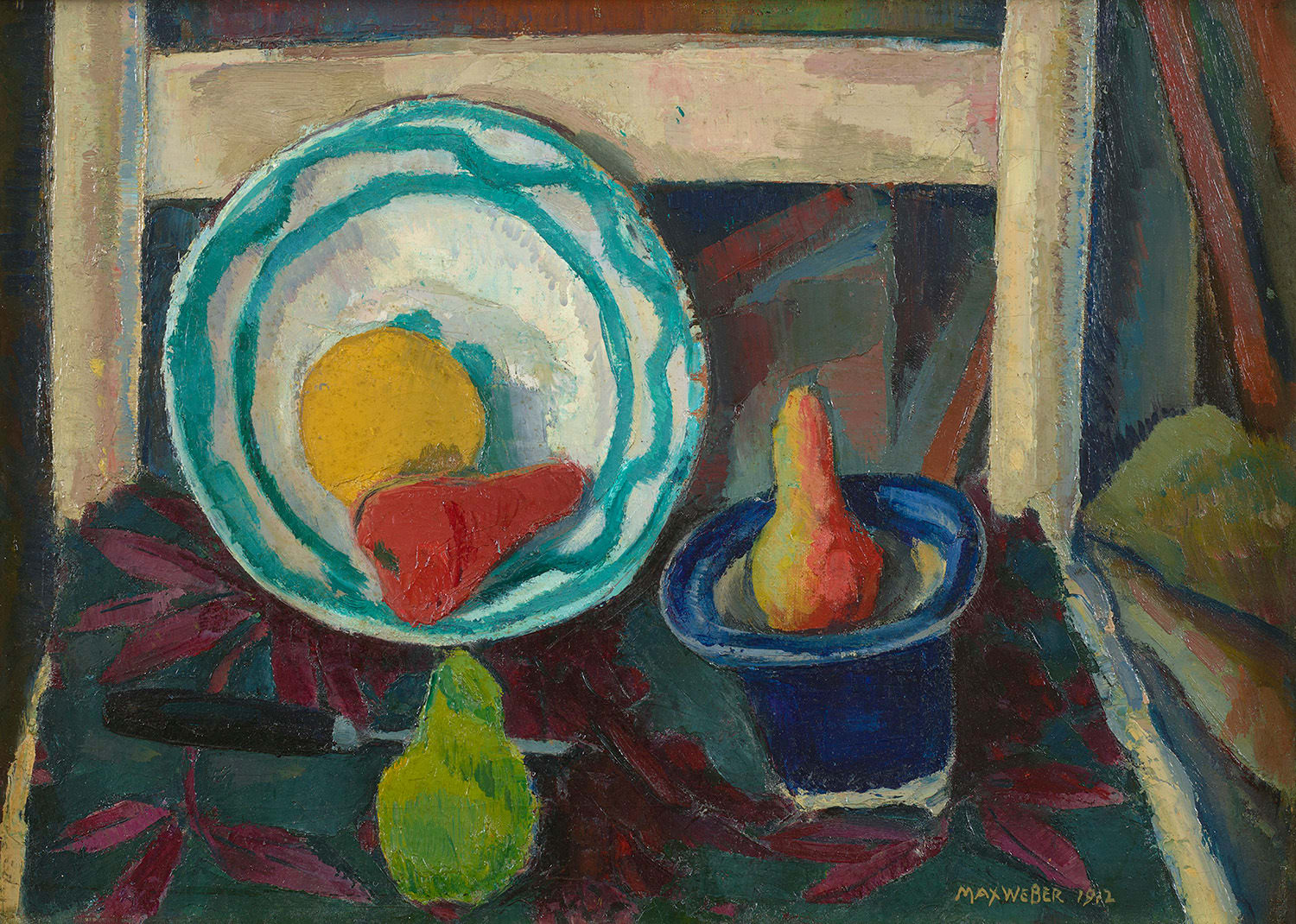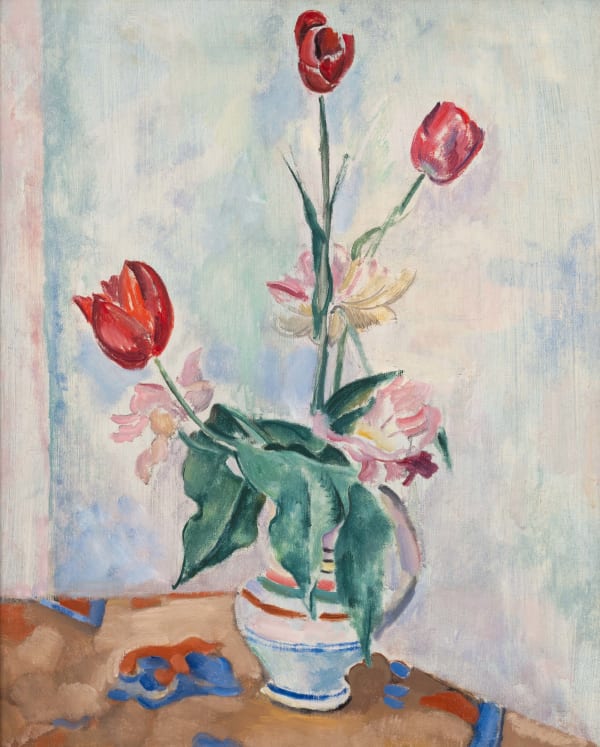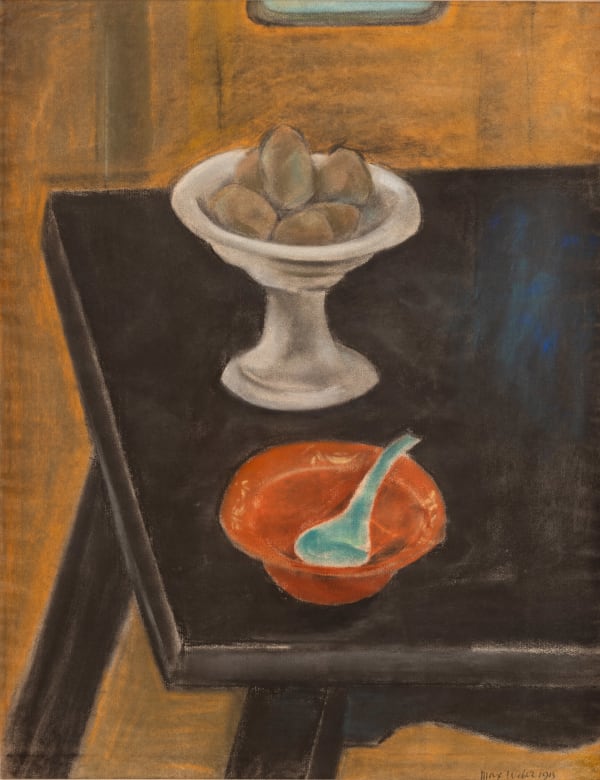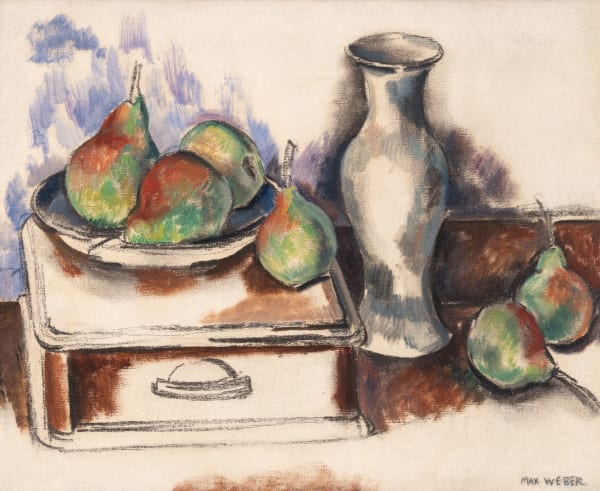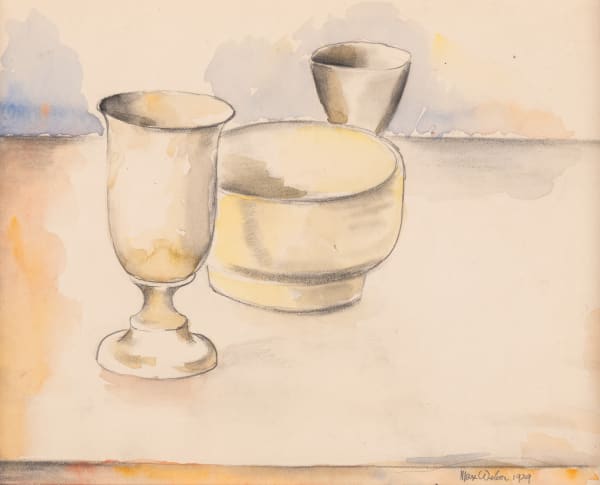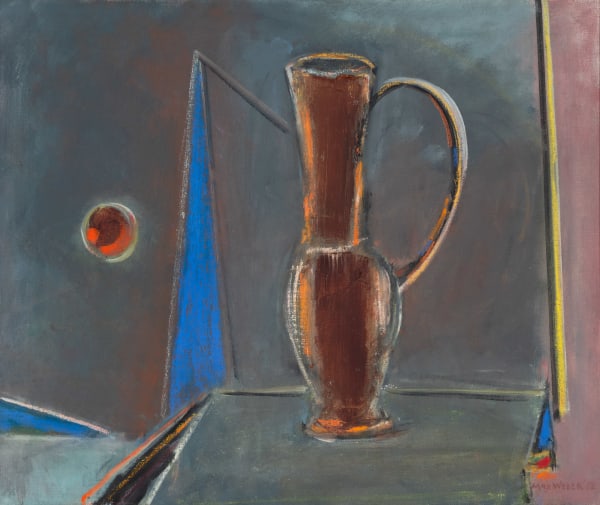-
“Culture will come only when every man will know how to address himself to the inanimate simple things of life. A pot, a cup, a piece of calico, a chair, a mantle, a frame, the binding of a book, the trimming of a dress…these we live with. Culture will come when people touch things with love and see them with a penetrating eye”
(Max Weber, Essays on Art, New York: William Edwin Rudge, 1916, 32. Quoted in Percy North, Max Weber: American Modern, New York: The Jewish Museum, 1982, 27.)
-

Max Weber
Italian Pitcher, 1921Painted in 1921, Italian Pitcher exemplifies Max Weber’s lifelong still life practice. From 1905 to 1908, Weber lived and worked in Paris, where leading figures of the avant-garde were developing radical new modes of visual expression. Weber was particularly deeply influenced by Paul Cézanne, the French Post-Impressionist master revered for his still life practice. Italian Pitcher echoes Cézanne’s still life practice, evidenced in its tilted table perspective and the inclusion of objects favored by Cézanne, such as pitchers, bread loaves, fruit, and table linens. -

Max Weber
Still Life with Purple Leaves, 1912Oil on canvas
13¾ x 19¾ inches
34.9 x 50.2 cm -

Max Weber
Chinese Planter with Green Leaves, c. 1907Oil on canvas
18⅛ x 21⅛ inches
46 x 53.7 cm -

Max Weber
Egyptian Pot and Fruit, 1923Max Weber's large-scale painting, Egyptian Pot and Fruit (1923) serves as a testament to the artist's enduring dedication to still life. An Egyptian black-topped redware jar, a type of pottery frequently discovered in the Nubian region along the Nile River, is positioned prominently at the top center of the composition. This Egyptian pot becomes a recurrent element in Weber's still lifes, notably appearing in The Blue Labeled Bottle (1917-18), among others. -

Max Weber
The Blue Labeled Bottle, 1917-18Oil on canvas
21¼ x 24¼ inches
54 x 61.6 cm -
If you would enjoy learning more about the available works, please contact Alana Ricca at (212) 879-8815, or alana@schoelkopfgallery.com. We look forward to being in touch.
Max Weber: Art and Life Are Not Apart presents 26 paintings and works on paper by Max Weber directly from the Max Weber Foundation spanning the full scope of the artist's career-long still life practice from 1907 to 1955. Informed by Paul Cézanne and Pablo Picasso, Weber's still lifes occupy a pivotal position between the European avant-garde and American modernism. The exhibition, which encompasses a variety of materials including oil, gold leaf collage, pastel, gouache, and watercolor, investigates Weber’s important contributions and reactions to a range of twentieth-century movements such as Cubism, Fauvism, and Surrealism.
In 1914, Weber claimed that “art and life are not apart,” positioning himself within a modernist tradition of painting quotidian life from lively Impressionist café scenes to hard-edge Pop depictions of mass-produced items. Weber distinguished himself through his deep belief that objects exist as symbols of culture and civilization and should be measured by their usefulness, spirituality, and intellect. According to Weber, culture is realized via the interaction between viewer and object. “Culture will come only when every man will know how to address himself to the inanimate simple things of life,” Weber wrote in his 1916 Essays on Art. “A pot, a cup, a piece of calico, a chair, a mantle, a frame, the binding of a book, the trimming of a dress…these we live with. Culture will come when people touch things with love and see them with a penetrating eye.” During the first half of the twentieth century, when many thinkers began to question the relationship between objects, images, and their meanings following the development of Saussurean semiotics, Weber remained committed to the concrete and tangible presence of objects rooted in the process of making. He believed the viewer could embody, through looking, the qualities of “proportion, harmony, balance, symmetry, in simple objects and works of art.”



